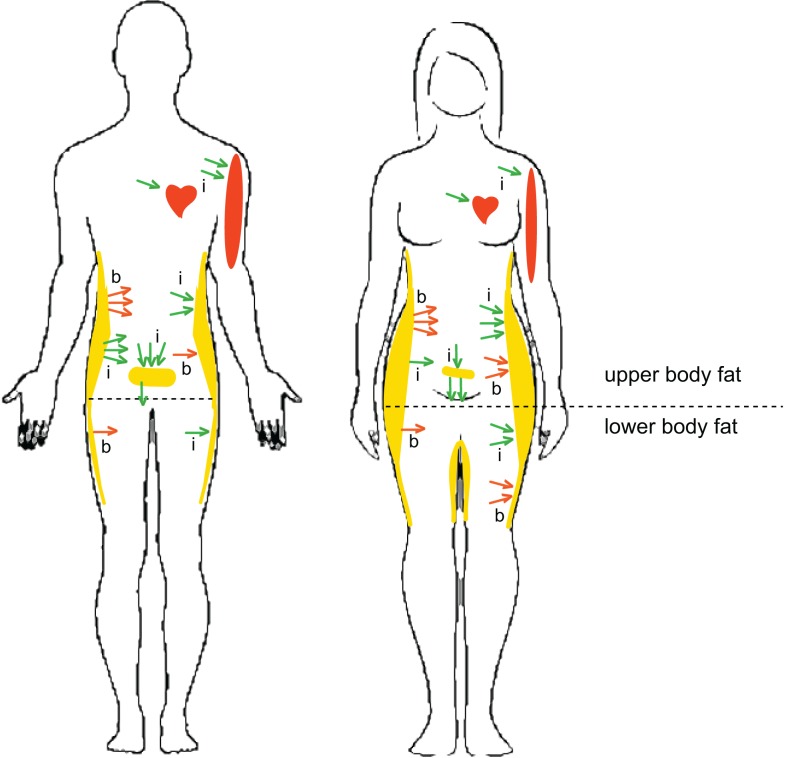Figure 1.
Sex- and depot-specific differences in lipid metabolism in humans. Women have higher percent body-fat and lower muscle mass and oxidize less lipid substrate than men. Women also have less V WAT and more SC WAT, both in the abdominal and gluteofemoral regions, than men. Outward arrows indicate basal (b) and insulin-inhibited (i) lipolysis. Inward arrows indicate basal (b) and insulin-stimulated (i) FFA uptake. Under basal post-absorptive conditions, upper-body SC WAT is more lipolytically active than lower-body SC WAT in both men and women (red outward arrows). The release of postprandial FFAs from upper-body SC WAT is less suppressed by insulin in men and FFA release from V WAT is less suppressed in women (green outward arrows). A greater percentage of postprandial FFAs are taken up by upper-body SC WAT in women than in men. Women display higher direct FFA uptake in leg SC WAT than men. Direct FFA uptake is higher in upper SC WAT than in lower SC WAT in men, but not in women. These sex differences in the topography of lipid metabolism may explain higher SC WAT, especially low-body SC WAT, in women compared to men. Higher muscle mass in males is beneficial for more efficient oxidation of FFAs.

